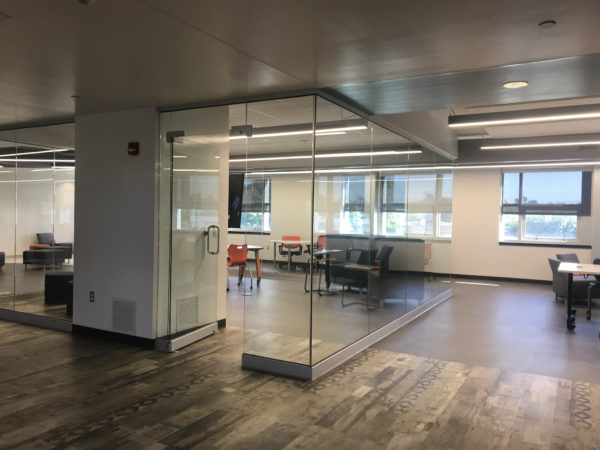As technology and innovation become first priority for school districts, it’s important that students are offered creative learning spaces to expand and challenge their knowledge and ability to create. Technology can help students boost their concentration, retain information, and encourage individualized learning programs. Students can also begin to advance their collaboration skills through online projects.
In the 2017 National Education Technology Plan Update, former U.S. Secretary of Education John King stated, “One of the most important aspects of technology in education is its ability to level the field of opportunity for students.” With technology in tow, creative learning spaces help to expand students’ minds to imagination and freedom of expression. These unique, educational spaces breed continued motivation for students that allow children to fully engage in their schooling and become excited about learning.
So, with the right aesthetics, a creative learning space can not only impact brain function, but positively influence how students feel at school and cultivate an environment that will support students’ success.
Top tech tools for students to think critically
Creative learning spaces house advanced technology such as interactive whiteboards, 3D printers, audio/visual production, and programming labs that help students develop better problem-solving and design-thinking skills.
These spaces also give young learners the opportunity to research and participate in classes related to computer science, robotics, physics, and more with easier access to the latest technology—all in one location.
Technology used in the field of education allows more hands-on learning that presents the opportunity to explain topics that are difficult to grasp. From elementary to high school, all grades are able to leverage and benefit from these spaces, whether for class-driven instruction, groupwork, or individual learning.
Collaboration centers
Collaboration is crucial in all aspects of the education system. Teacher, parent, administration, and student collaboration are the key to success. Group projects in an open space allow students to improve their social and interpersonal skills. Working well with a team and communicating effectively are abilities collaborating students will acquire.
Collaboration centers maximize the educational experience. K-12 students can convene in the collaboration center and improve upon their communication skills. Students can improve their ability to think critically in this ever-changing educational environment. Attaining these skills early in life will lead to a greater amount of success when they enter the workforce.
Involving industry partners
In alignment with school district’s curriculums, creative learning spaces can also offer students unique opportunities to work with local industry partners one-on-one to gain knowledge and experience that correlates with the student’s desired career pathway.
Involving the community and partners in the community can provide invaluable experience to students and encourages young learners to continue their studies outside of the classroom.
- 4 ways to encourage play in education - April 25, 2024
- It’s time to pay student teachers - April 25, 2024
- The evolving requirements of a K-12 school network - April 24, 2024

